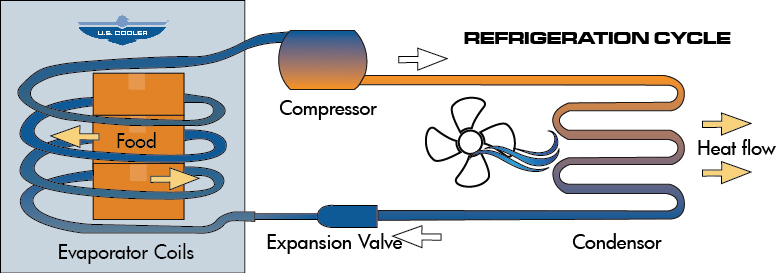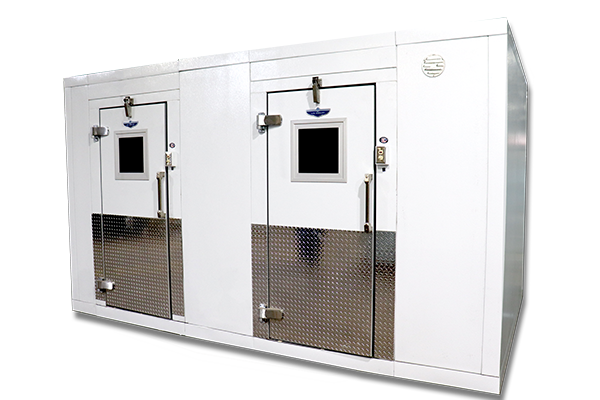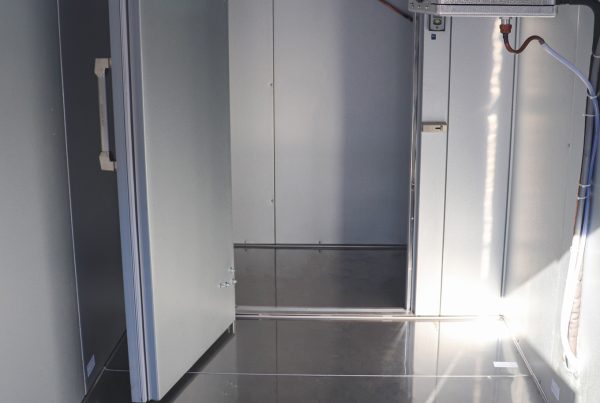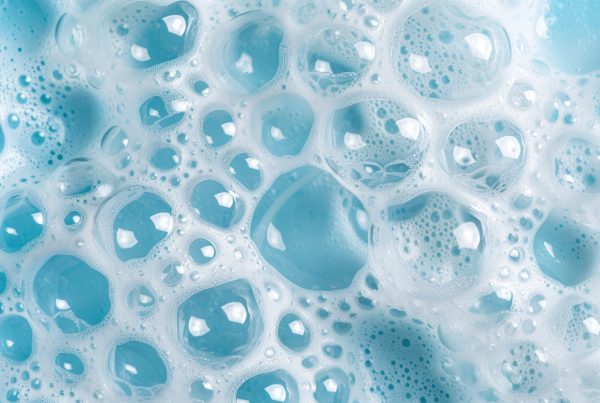Freezers are essential tools in both domestic and commercial settings, crucial for food preservation and safety. The technology behind these indispensable appliances is both fascinating and complex. Here’s a detailed look at how freezers work, from basic principles to the components that make them function effectively.

Basic Principles of Freezing
At its core, a freezer operates by removing heat from the items inside it and transferring it to the environment outside. This process is governed by the principles of thermodynamics, specifically the laws concerning heat transfer, energy conservation, and entropy.
Components of a Refrigeration Unit
- Compressor: The refrigeration cycle begins with compression, where the compressor plays a key role by raising the pressure of the refrigerant gas. As the refrigerant enters the compressor, it is a low-pressure, low-temperature gas. Once compressed, it exits as a high-pressure, high-temperature gas, ready for the next phase of the cooling process.
- Condenser Coils: The condenser, or condenser coil, serves as one of the two essential heat exchangers in a standard refrigeration cycle. It receives high-pressure, high-temperature refrigerant vapor from the compressor and works to remove heat from the vapor. As the refrigerant cools, it transforms into a saturated liquid, a process known as condensation.
- Expansion Valve: The role of an expansion device in a refrigeration system is to create a pressure drop as the refrigerant exits the condenser. This drop in pressure causes some of the refrigerant to rapidly boil, forming a two-phase mixture. This quick phase transition, known as flashing, prepares the refrigerant for the next stage in the cycle, where the evaporator can efficiently carry out its function.
- Evaporator Coils: The evaporator is the second heat exchanger in a typical refrigeration system, named after its primary function—evaporating refrigerant to absorb heat. It plays a crucial role in the cooling process by doing exactly what air conditioning systems are designed to do: remove heat from the surrounding air. As low-temperature, low-pressure refrigerant flows into the evaporator, a fan blows air across its fins, allowing the refrigerant to absorb heat from the space being cooled. Once the heat is absorbed, the refrigerant is cycled back to the compressor, restarting the refrigeration process.
- Refrigerant: This is the fluid that circulates through the entire system. It has properties that allow it to change states at convenient temperatures for heat absorption and release.

The Refrigeration Cycle
The cycle starts with the compressor, which compresses the refrigerant into a hot gas. This gas then travels through the condenser coils where it loses its heat to the outside and condenses into a liquid. After passing through the expansion valve, it cools down rapidly and enters the evaporator coils as a cold, low-pressure gas. Here, it absorbs heat from the freezer’s contents, cooling them down. The refrigerant evaporates back into a gas and returns to the compressor to repeat the cycle.
Factors Influencing Efficiency
The efficiency of a freezer depends on several factors, including the type of refrigerant used, the tightness of the seal on the freezer door, the thickness and type of insulation, and the ambient temperature where the freezer is located. Advanced models may incorporate features like digital temperature controls, frost-free technology, and energy-efficient compressors to enhance performance and reduce energy consumption.

Conclusion
Understanding how freezers work helps in choosing the right model for your needs and ensuring its proper maintenance. By controlling the complex interplay of its components and the refrigeration cycle, freezers provide a stable environment essential for food safety and preservation. As technology advances, features that increase energy efficiency and reduce environmental impact are becoming increasingly common, reflecting the evolving nature of freezer technology in response to consumer and commercial needs. For any specific queries or to learn more about the best options for your needs, a consultation with a U.S. Cooler expert can be highly beneficial.




